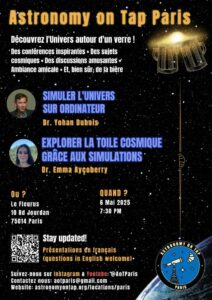Date: October 19th 2017
Speaker: François Lanusse (Carnegie Mellon University)
Title: Towards a better control of weak lensing systematics in the LSST era using Deep Learning
Abstract
In this talk, I will present several applications of the most recent advances made in the field of Deep Learning to some of the main sources of systematics affecting the weak lensing probe in next generation wide field cosmological surveys.
Most current shape measurement methods used for weak lensing will require precise calibration to reach their science requirements. This calibration step is typically performed through extensive galaxy image simulations. I will present an application of Deep Generative Models, based on variational inference, aiming at producing realistic galaxy images with complex morphologies which can be used as inputs of the image simulation pipeline instead of scarce and expensive space-based observations.
A second important source of systematics comes from uncertainties in photometric redshift estimation. Most current techniques rely solely on color measurements to build a redshift estimation. I will present an extension of these ideas but based on using multi-band galaxy images as input of the
supervised regression problem. The proposed architecture, based on Deep Residual Networks (resnet), is able to complement color information with morphology information in order to improve the accuracy of the redshift estimate.
Finally, another major potential source of systematics comes from intrinsic galaxy alignments (IA). While hydrodynamical simulations can reproduce to some extent these alignments, they are limited to fairly small cosmological volumes. However, to properly test IA marginalisation schemes at the scale of
LSST or Euclid, much larger simulation volumes are necessary. I will present an application Graph Convolutional Networks which allows us to model the IA signal on a graph of the cosmic web. This method allows us to populate simpler Dark Matter only N-body simulations of much larger volumes with realistic galaxy alignments.



